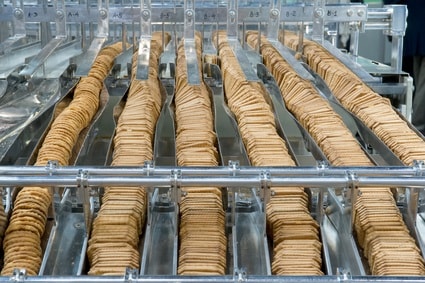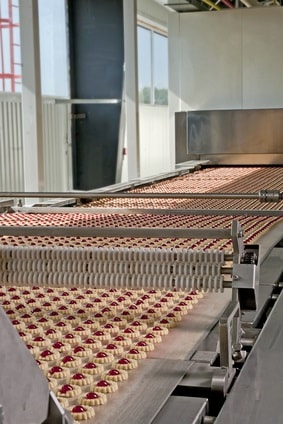Food manufacturers face pressure to generate as much profit as possible for their shareholders, which leads to the temptation to cut costs whenever, wherever, and as much as possible. That leads some to bypass the importance of sanitary design in the construction of food equipment used in their companies. They miss the lifetime ROI to be gained from an initial investment into machinery built with solid sanitary design principles.
Applying sanitary design principles to the equipment used in factories allows companies to provide food to consumers in the safest manner possible, which in turn helps them avoid costly PR disasters that arise when contaminated products make it to the public.

Following these principles of sanitary design helps food manufacturers ensure they’re providing the best quality food to market. Food equipment constructed with these guidelines can be cleaned more efficiently, leading to labor cost savings.
Other Benefits of Sanitary Design in Food Equipment Construction:
No cost cutting savings cover the value lost when the public loses trust in your brand by associating it with unsafe products.
Design equipment to handle one type or the other, not both. It’s simply not safe to process food meant to be eaten directly with things like meat that require cooking to be acceptable for human consumption.
Encourage clients still using old equipment to make the leap to updated technology. Having equipment capable of processing different lines of products allows for flexibility in expansion efforts.
Listeria and other bacteria like to burrow into hidden machine crevices. Your equipment should be designed for cleaning at the most micro of levels.
Floors, ceilings, doors and any other place food contamination could spread need to be accessible to this level of cleaning as well. Everything used in a plant should be inspectable for possible contamination.
The materials used to build your processing machines should complement your food product of choice. Using incompatible materials with the wrong food could lead to corrosion or other issues. That increases the risk of contamination working its way into your machines.
Keeping things compatible removes places bacteria can hide. This lowers the chances of products accidentally making it out of factories with some type of bug waiting to wreak havoc on the population at large.
The principle of cleanability touched on earlier ties directly to this guideline. Every zone of a processing plant should be inspection-ready at any time.
This Includes:
Accessibility makes it safe for workers to go in and thoroughly clean food equipment. It also helps to draw up guidelines a chain of responsibility for every piece of machinery.
Under no circumstances should you allow condensation to gather anywhere on machinery. That creates conditions for bacteria to grow and spread. Design equipment to be self-draining and prevent any water pooling on surfaces.
Take shapes into account. Try to make horizontal frameworks as rounded as possible. Make sure square or rectangle surfaces slant at an angle to encourage draining of any moisture from the exterior.
Also Look For:

Try to minimize the use of any framework in equipment containing penetrations allowing access to moisture and other contamination. Seal those places off if you find it necessary to include them in your food equipment design.
Check for spaces behind things like nameplates bolted to the outside of a piece of machinery with unsealed pop rivets. Make sure you account for easily overlooked contamination crevices like bolts, function boxes, sleeves, and end caps.
Make sure using a machine in normal daily processes does not contribute to the spread of contamination throughout your facility. Normal operations should not allow bacteria to make its way into products.
Things like conveyor belts should be designed to resist moisture build-up and still allow for increased product runs that don’t affect food safety. Never put productivity ahead of looking out for the public interest. Good machinery design allows you to be efficient and reduce contamination risk.
Any food equipment used in facilities should come with clear guidelines on effectively cleaning it. There should be no confusion about what to use and how to properly inspect the equipment.
Failing to provide one standard could lead to workers using their own interpretation. That opens you up to the possibility of contamination spreading through your plant and into your food supply.
Following these principles in the construction of food equipment helps you build machinery that’s both efficient and safe to use. Most companies find the long-term investment in properly built equipment worth the long-term payoff in public safety.
Our sales engineers are experts in automatic asset tracking, tagging and identification,a nd can answer all your questions. Get in touch now.
Lets Talk ›